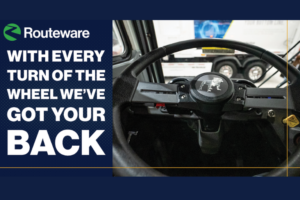To fill drivers’ seats in solid waste as quickly as they’re being vacated, haulers need a new playbook.
Appealing to the same audience by doing “business as usual” is no longer an option: It’s time to break down barriers to entry through digital technology — and welcome a younger, more diverse team to work behind the wheel. Consider:
- Solid waste drivers are aging and retiring faster than younger drivers can replace them.
- It’s easier to recruit younger people to drive modernized trucks equipped with the tools they’re used to using already in everyday life, such as external cameras and turn-by-turn directions.
- Middle-aged white males hold an outsized number of trucking jobs, which means many haulers are missing out on the business benefits of diversity: Research shows diverse teams are more efficient and effective.
- Reliable fleet technology is already helping haulers appeal to a more diverse recruiting base by removing old barriers to entry.
Recruit hard-to-reach younger drivers
The US Census Bureau says the average age of a truck driver today is 46, and younger workers aren’t filling seats as quickly as they’re being vacated.
While this is not a new phenomenon, there’s a growing perception that self-driving trucks soon will make CDL careers obsolete, which may discourage younger people from joining the ranks.
One proposed legislative solution, yet to be voted upon, is the DRIVE-Safe Act. Introduced in 2018, it aims to create an apprenticeship program and loosen some restrictions on drivers under the age of 21.
Even for those who aren’t worried about driving jobs going away, some people are averse to the idea of hauling waste, perhaps especially when they’re not aware of how highly technical today’s collection vehicles can be.
It’s easier to recruit a younger, digital-native driver with a truck that’s equipped with the kind of technology they already use in daily life.
Gone are the days of paper-based routes and reliance upon institutional memory to get things right. Instead, it’s incumbent upon haulers to equip drivers with tools they know, like turn-by-turn directions, instant messages, and access to information on the go. Along with the power of photo and video that allows drivers to share what’s happening on the street with office staff and supervisors in real time, these tools help reduce friction and make the job more satisfying.
Drive diversity and power team performance
Middle-aged white males comprise the largest demographic in trucking according to the Census Bureau, and efforts are underway to recruit underrepresented women and minorities into the profession to help meet demand.
For example, the mission of Women in Trucking, an industry group, is to promote gender diversity in transportation. Currently women make up nearly 50 percent of the labor force but represent only eight percent of drivers.
This equates to a quantitative as well as a qualitative loss in talent, as research by Korn Ferry Institute indicates that well-managed diverse teams significantly outperform well-managed homogeneous teams. In the long term, diverse teams can save time and money.
Technological solutions may help diversify solid waste hauling by making these jobs more accessible to women, who adjust their careers to accommodate family life more than men, according to Pew Research Center.
People with time-dependent after-work responsibilities, such as family care, may be unable to accept a position with no absolute end time. Working hours that fluctuate from day to day may not be desirable — or even possible.
Smart fleet solutions can help fix the scheduling conundrum, opening the door to applicants who previously experienced barriers to employment as solid waste drivers.
In practical terms, on-board computers allow back-office personnel to proactively monitor route progress so that there are no surprises for drivers at the end of the day. Instead, “helper” routes can be evenly distributed early on so that everyone goes home on time.
Into the future
We’ve long known that the right technology helps organizations recruit and retain top talent. Today with greater competition for drivers, there’s no other way to accomplish this at scale. The way forward is clear: To recruit diverse talent, investment in dependable technology plays an important role.
Learn more. Empower drivers and help your teams level up with smart-truck technology. Let’s talk!





